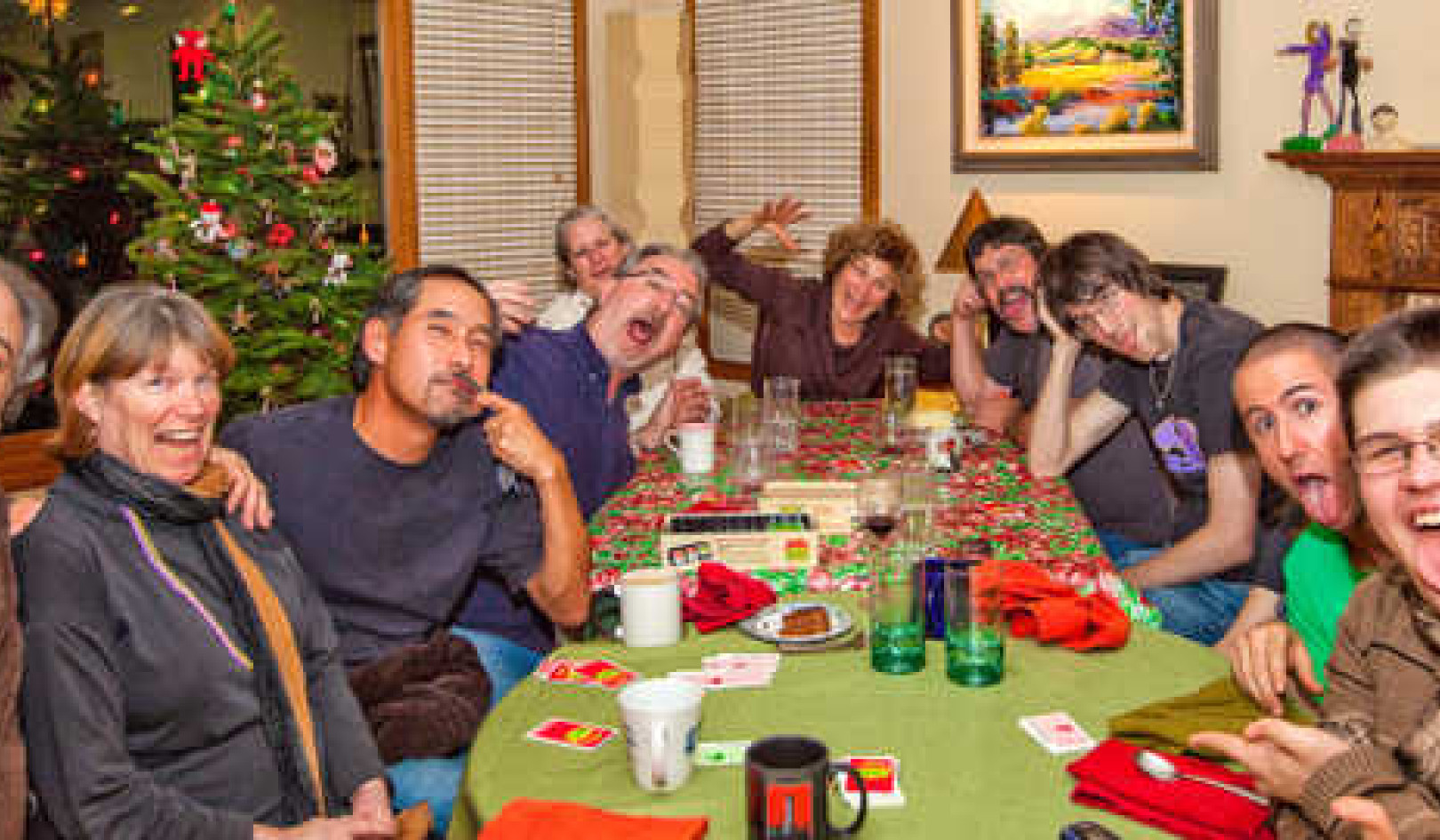
Isn’t it weird that some words don’t rhyme that look like they should, like wood and food? (Shutterstock)
Parents are often their children’s first literacy teachers. They oversee children signing their names on artwork and read storybooks with their kids. Yet not much research has focused on what exactly parents do when helping their children read.
Our research examines reading-related knowledge, which is not the same thing as being a good reader.
Parents with higher reading-related knowledge are more likely to point out interesting patterns in oral and written language to their children. They also tend to be more encouraging by providing supportive comments and useful tips while helping their children read. We have reason to believe that over time, these behaviours enhance children’s reading and spelling development.
Assessing parents’ skills
Reading-related knowledge comprises at least three important skills. These are phonological awareness (a capacity to isolate and manipulate units of sound, such as by coming up with rhymes or being able to say how many different sounds are in a word), knowledge of written syllable patterns and the ability to identify regular and irregular word spellings.
We measured reading-related knowledge in a study that recruited a sample of 70 parents from local Québec schools. A criterion for participation was that English was primarily spoken in the home. Survey respondents were well-educated and had middle-upper class incomes.
We asked parents to do the following:
-
Count the number of units of speech sounds (the word church has three sounds: ch/ur/ch);
-
Determine which syllable patterns were represented in four words (for example, a consonant-vowel-consonant word like bed represents a closed syllable and a consonant-vowel word like be represents an open syllable);
-
Distinguish between regular and irregular word spellings. For example, according to what is called the “magic letter E pattern,” the final E marks the vowel that comes before it as long. So, a word like hive is regular because the letter I says its own name. The word give is irregular because the letter I is a short vowel sound.
We found that parents who had better skills in these three areas praised their children more.
They might say things to their child like: “Really good reading!”
These parents also explained more letter-to-sound connections when helping their children read. That means if the child was reading a word like exit, the parent might say “This E sounds like the E in egg.”
Word play is not just play
 Traditional English language nursery rhymes such as ‘Little Miss Muffet sat on a tuffet’ emphasize rhyming. (Shutterstock)
Traditional English language nursery rhymes such as ‘Little Miss Muffet sat on a tuffet’ emphasize rhyming. (Shutterstock)
When parents play rhyming games, this builds children’s awareness of speech sounds and phonological awareness, the ability to isolate and manipulate sound.
Parents might also use alliteration, drawing attention to first sounds that are repeated in fun language play heard in sentences like: “Maggie-May minds messes.”
Phonological awareness deals only with sounds. So, an example of alliteration is also: “The King’s calico cat ….”
Isolating speech sounds helps children later map sounds onto letters.
Considering words such as cat and king, children must be able to first associate the letters C and K with the /k/ sound, and then blend the /k/ sound with the other sounds to read the words.
Whereas, to spell these words, children must isolate each of the three speech sounds (/k/a/t/ and /k/i/ng/) while associating them with corresponding letters and letter patterns.
Learning to spell
When children are made aware of syllable types in English, it helps them understand why pronunciations of vowels may differ across words. Familiarizing children with the most common syllable types is important because knowing them makes reading and spelling less erratic.
For example, children often start reading words with closed syllables like cat or hat, where the vowel is short and followed by at least one consonant.
New readers also encounter words with open syllables, such as in the words me and go, where the vowel is spelled with a single letter and says its own name.
It is not uncommon for children to find words containing what are called vowel teams: In such words, the first vowel sound is long, as in the word team itself. The expression “when two vowels go walking, the first one does the talking,” is often helpful to remember this type of word (for example, rain or boat).
As discussed above, in words like hive and make, the final E “magically” turns the preceding vowel into a long sound. We observed that parents who have an implicit understanding of syllable patterns remind their children of these — for example, by saying “Watch for the magic letter E,” which helps their children read more accurately.
Tips for parents
Learning to sound out words is critical but in a complex language like English, it is not enough. In irregular words that don’t conform to typical letter-to-sound pronunciations (such as the word one), it is counterproductive to tell children to sound them out. Indeed, when parents ask children to sound out irregular words, or act overly confused when a child pronounces “one” as “own,” it can be frustrating for children.
 P is for Pterodactyl, by Raj Haldar. (Sourcebooks Jabberwocky)
P is for Pterodactyl, by Raj Haldar. (Sourcebooks Jabberwocky)
Parents can keep their eyes open for words that rhyme (pie, sigh) or do not rhyme even though they look like they should (wood, food).
Interested parents can choose to visit websites such as Reading Rockets to learn more about syllable types in English and other skills that underlie fluent reading.
They can also seek out clever storybooks to help them and their children learn about phonological awareness and irregular spellings. Some examples are Did you take the B from my ook? or P is for Pterodactyl: The worst alphabet book ever.
Clearly, helping children read extends beyond simply correcting errors. Rather, parents might start by taking an interest in the beauty and occasional weirdness of language, and then passing it on to their children.
About the Authors
Aviva Segal, Part-time Faculty in the Department of Education, Concordia University and Sandra Martin-Chang, Professor, Department of Education, Concordia University
This article is republished from The Conversation under a Creative Commons license. Read the original article.

Related Books:
Here are 5 non-fiction books on parenting that are currently Best Sellers on Amazon.com:The Whole-Brain Child: 12 Revolutionary Strategies to Nurture Your Child's Developing Mind
by Daniel J. Siegel and Tina Payne Bryson
This book provides practical strategies for parents to help their children develop emotional intelligence, self-regulation, and resilience using insights from neuroscience.
Click for more info or to order
No-Drama Discipline: The Whole-Brain Way to Calm the Chaos and Nurture Your Child's Developing Mind
by Daniel J. Siegel and Tina Payne Bryson
The authors of The Whole-Brain Child offer guidance for parents to discipline their children in a way that promotes emotional regulation, problem-solving, and empathy.
Click for more info or to order
How to Talk So Kids Will Listen & Listen So Kids Will Talk
by Adele Faber and Elaine Mazlish
This classic book provides practical communication techniques for parents to connect with their children and foster cooperation and respect.
Click for more info or to order
The Montessori Toddler: A Parent's Guide to Raising a Curious and Responsible Human Being
by Simone Davies
This guide offers insights and strategies for parents to implement Montessori principles at home and foster their toddler's natural curiosity, independence, and love of learning.
Click for more info or to order
Peaceful Parent, Happy Kids: How to Stop Yelling and Start Connecting
by Dr. Laura Markham
This book offers practical guidance for parents to shift their mindset and communication style to foster connection, empathy, and cooperation with their children.

























